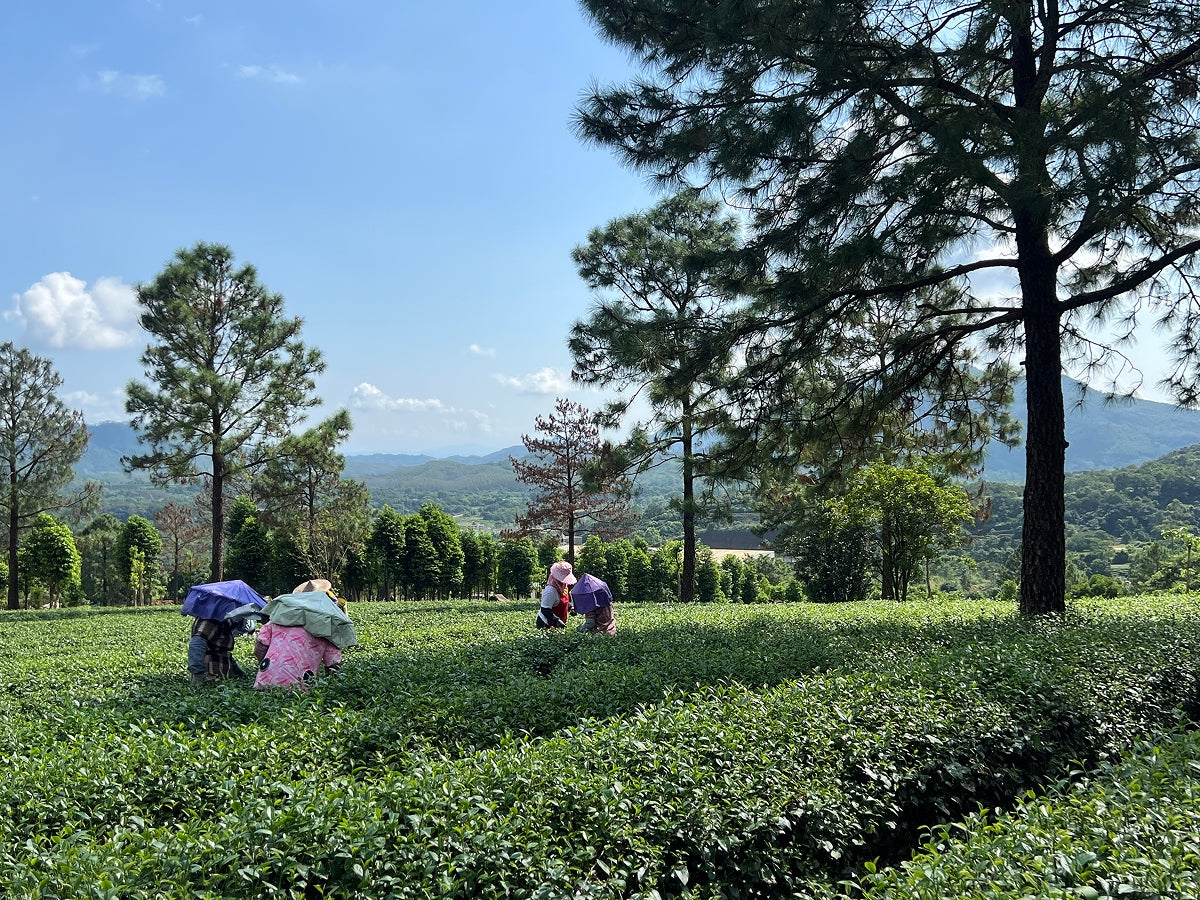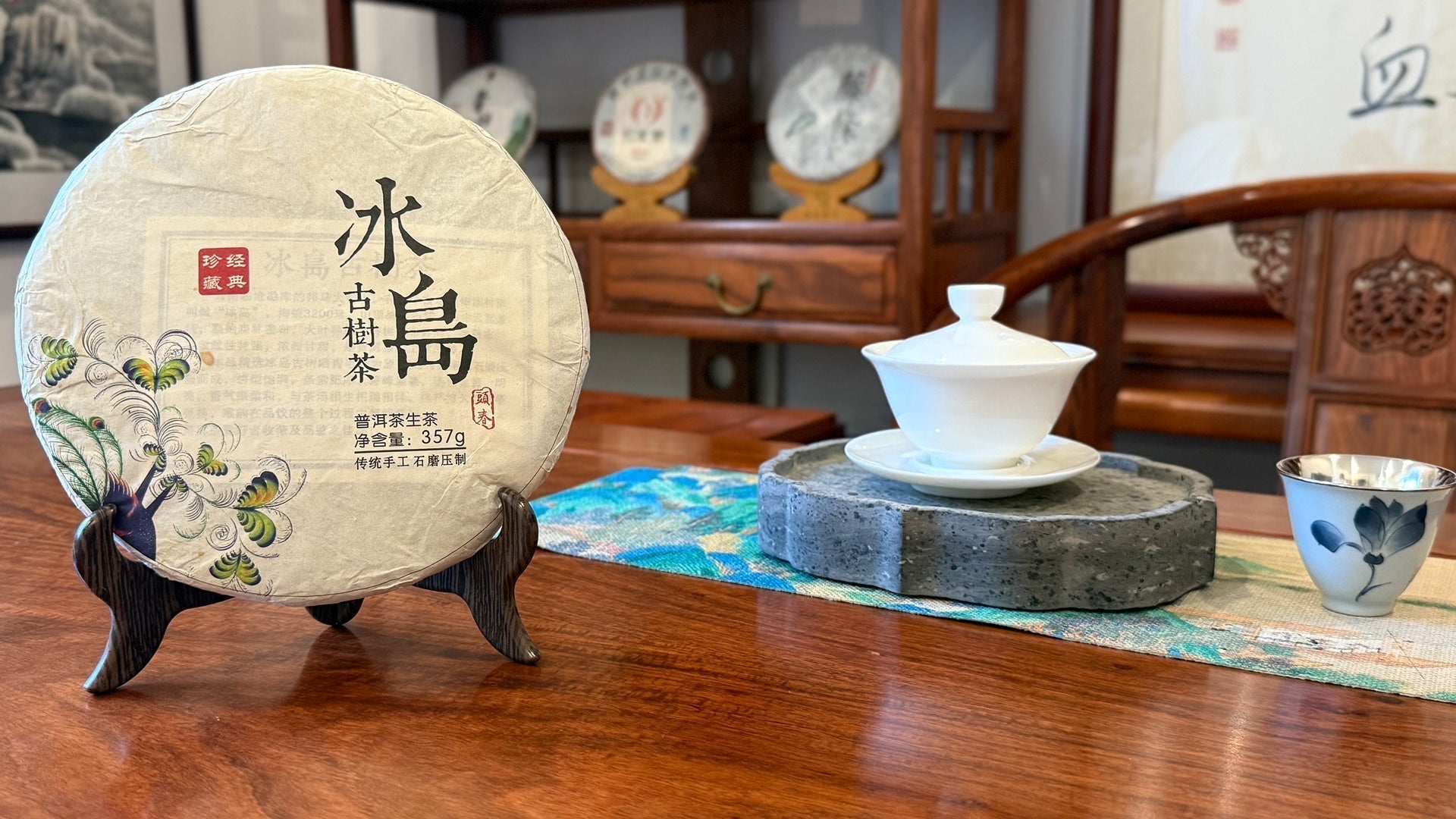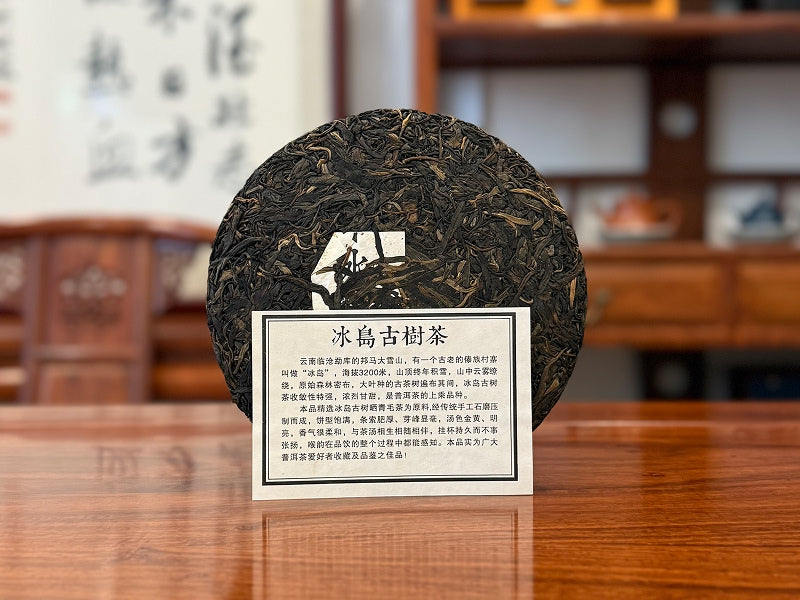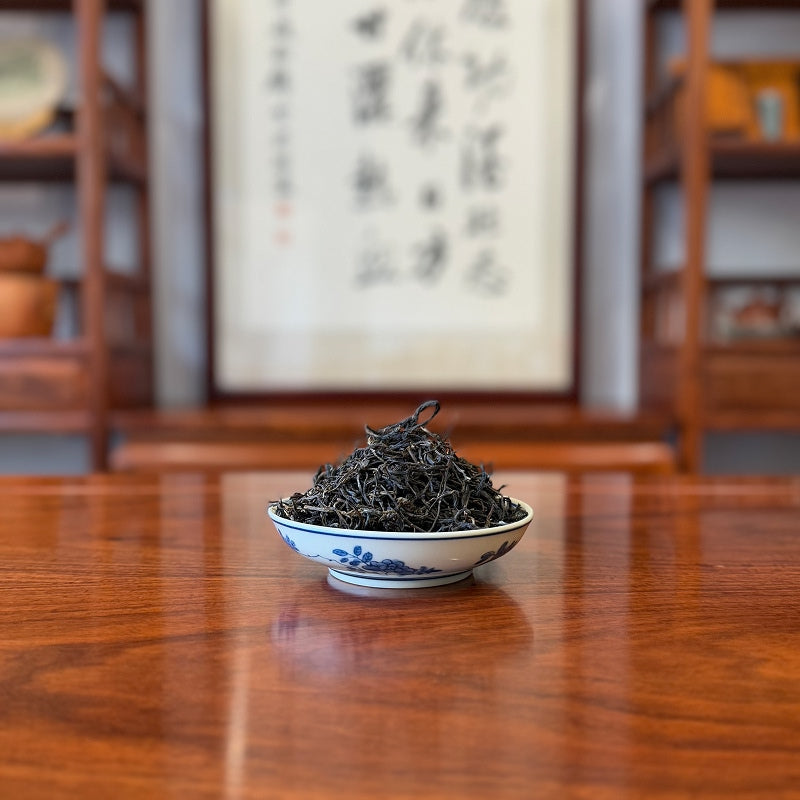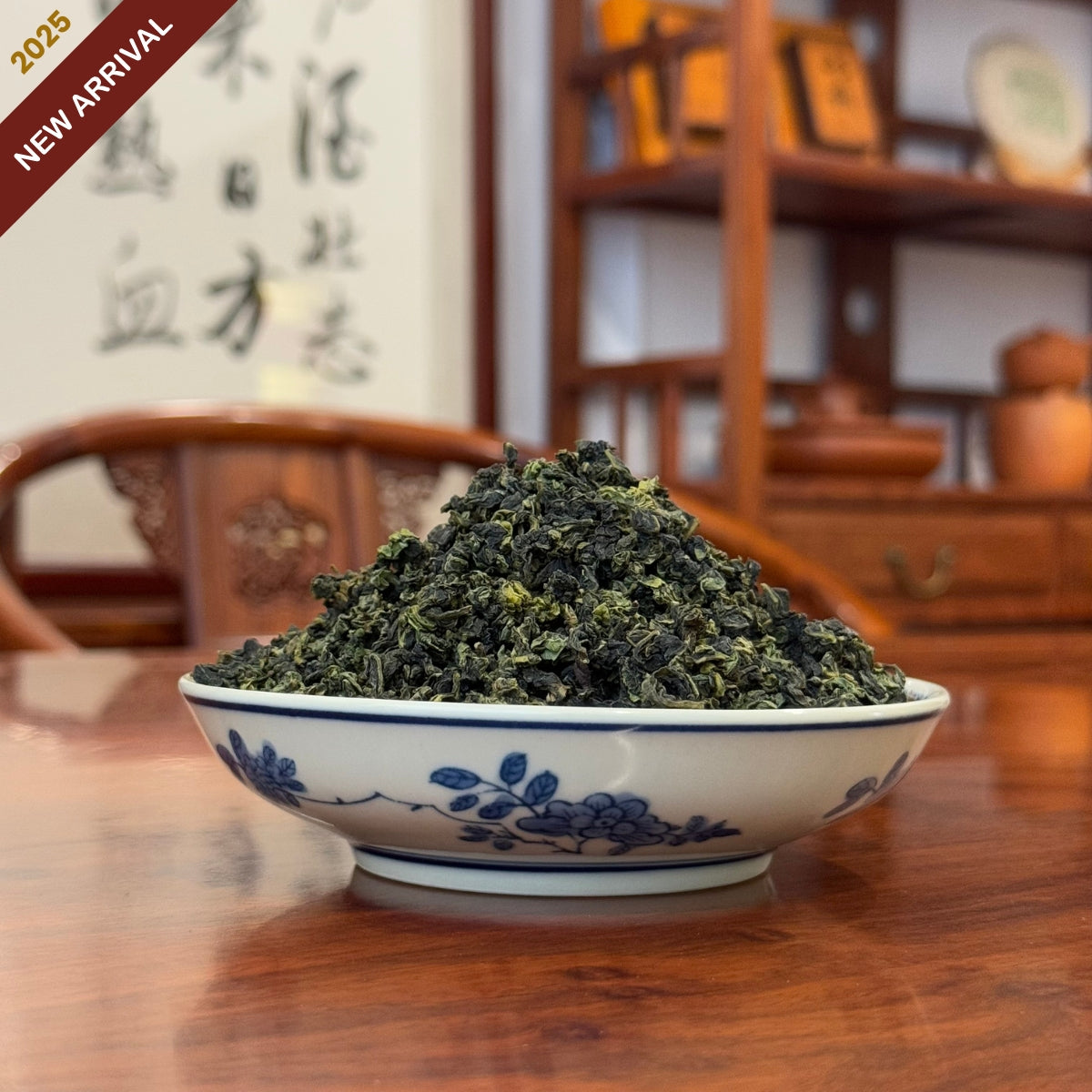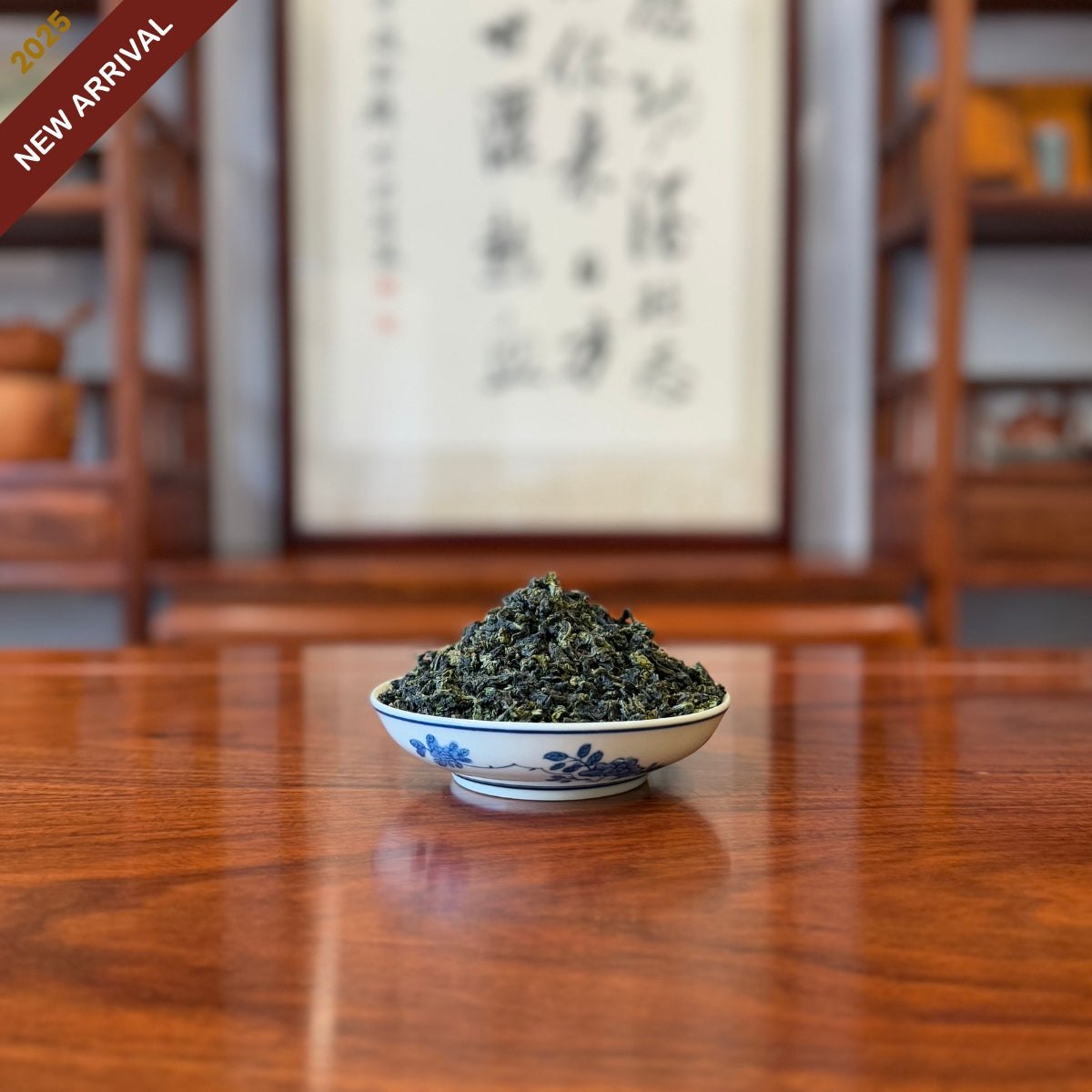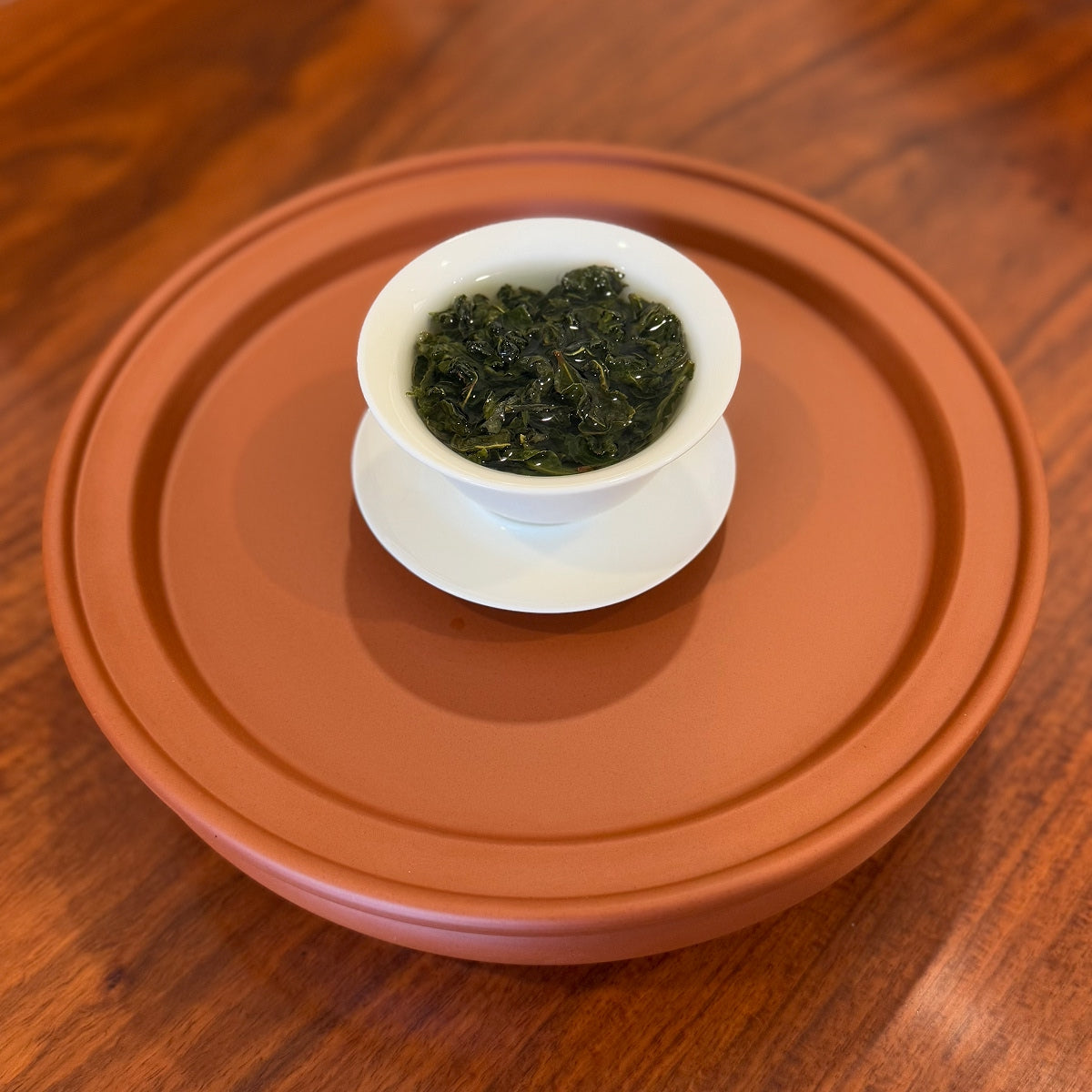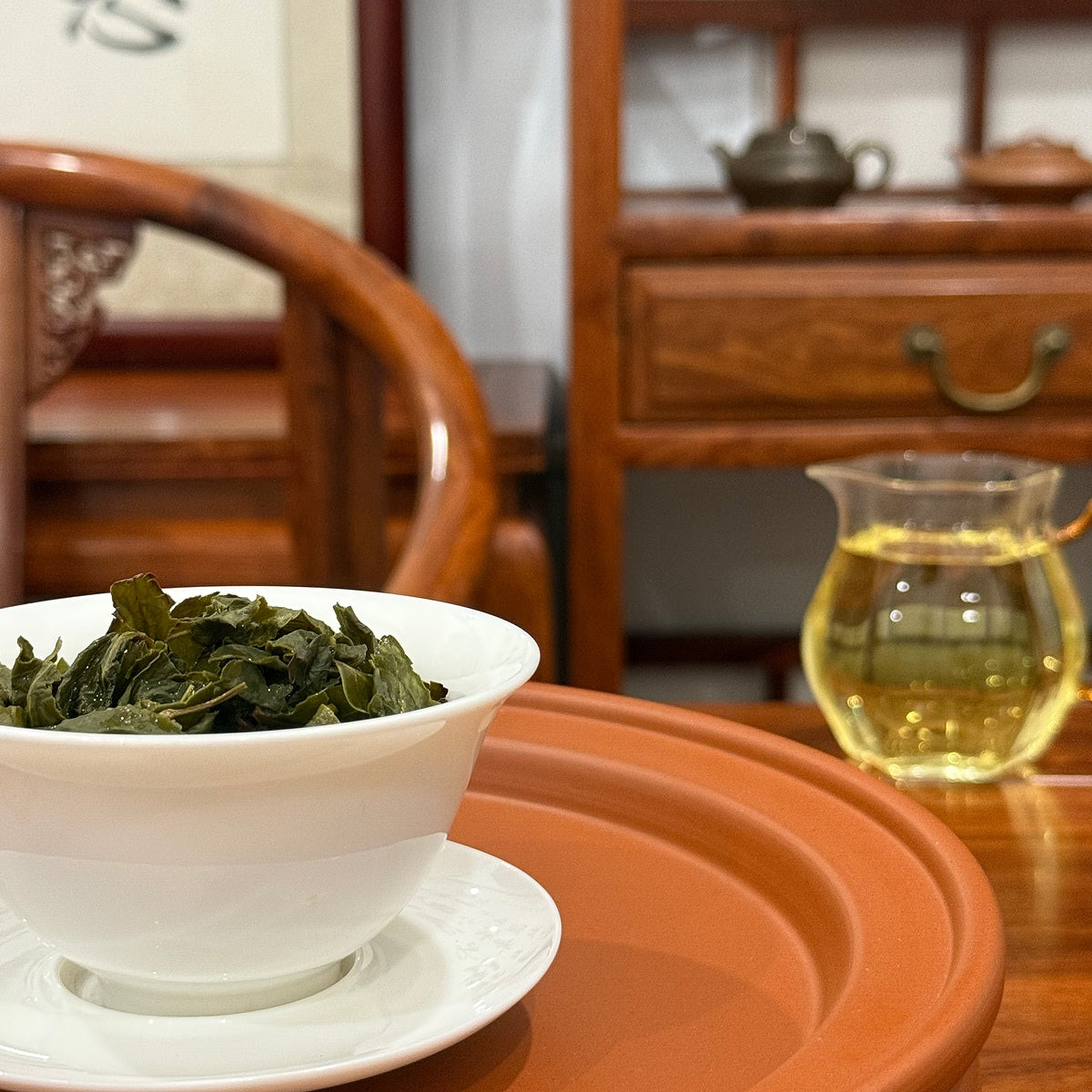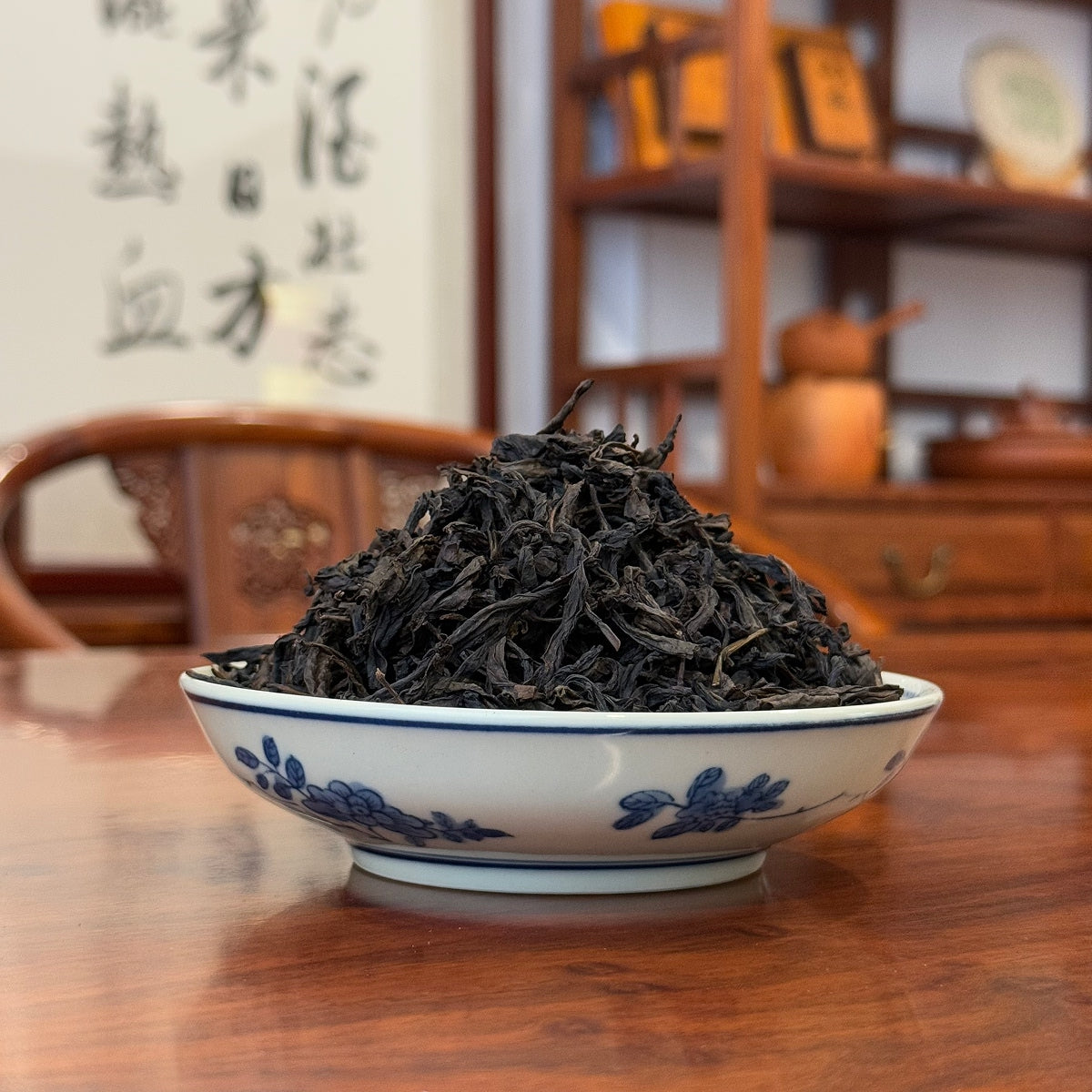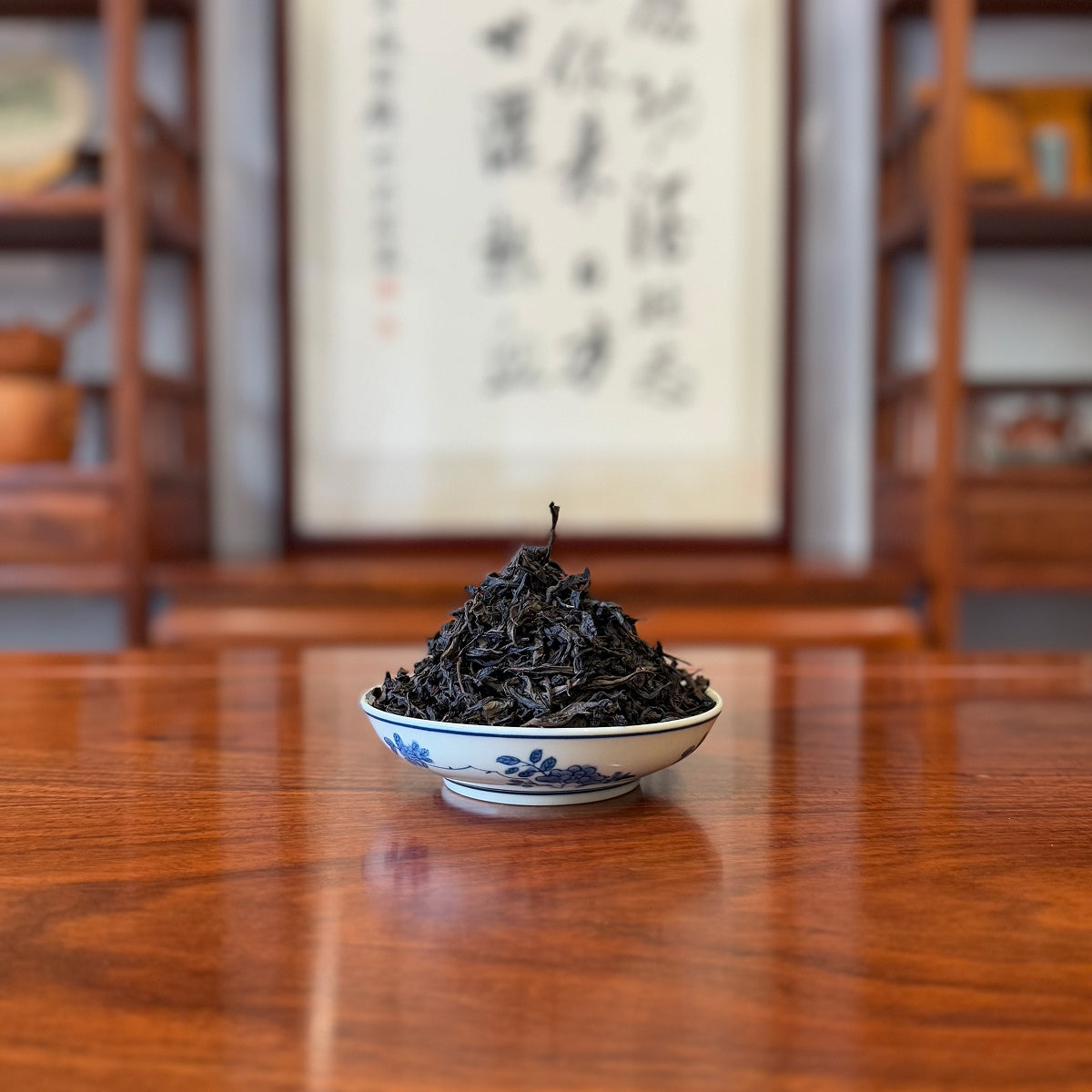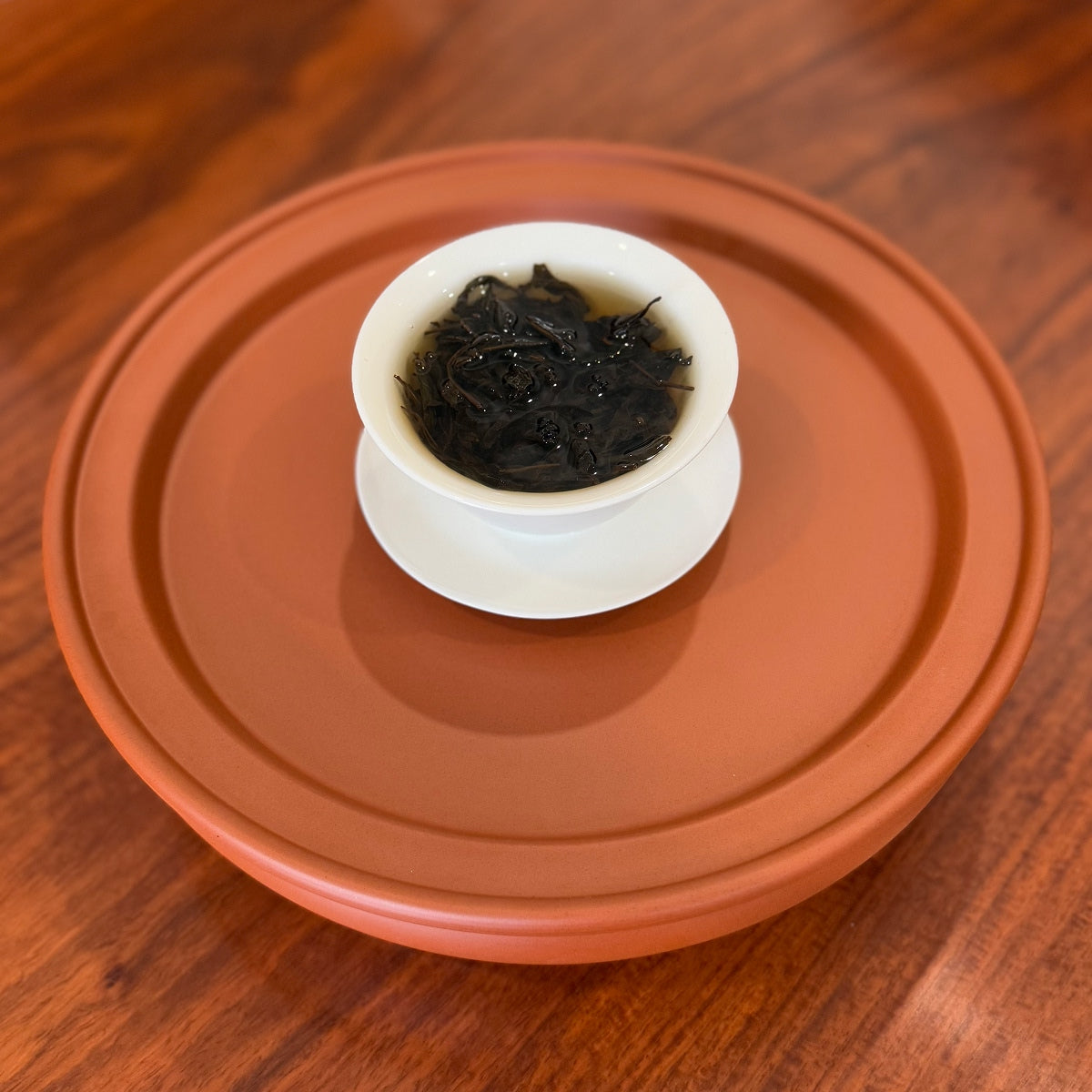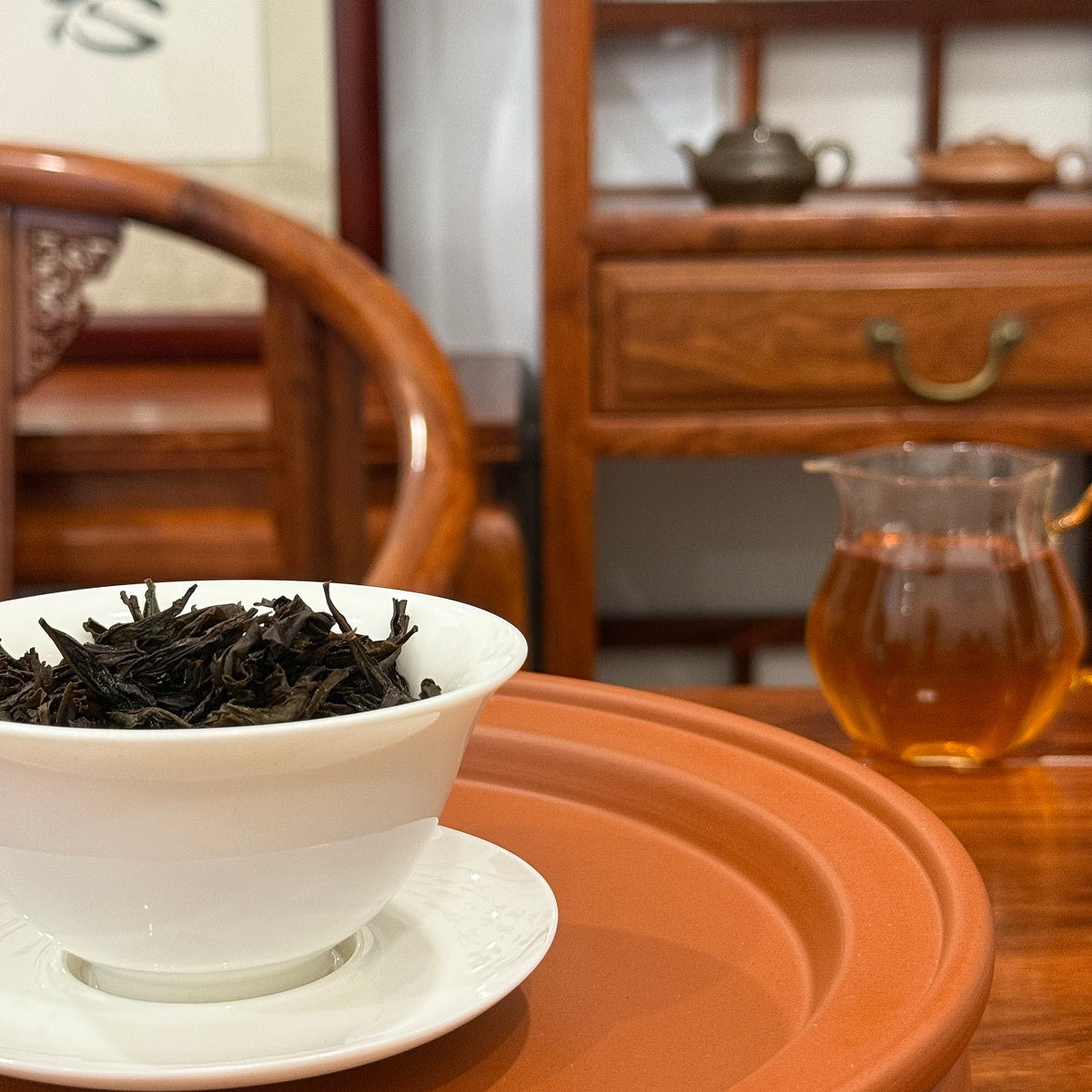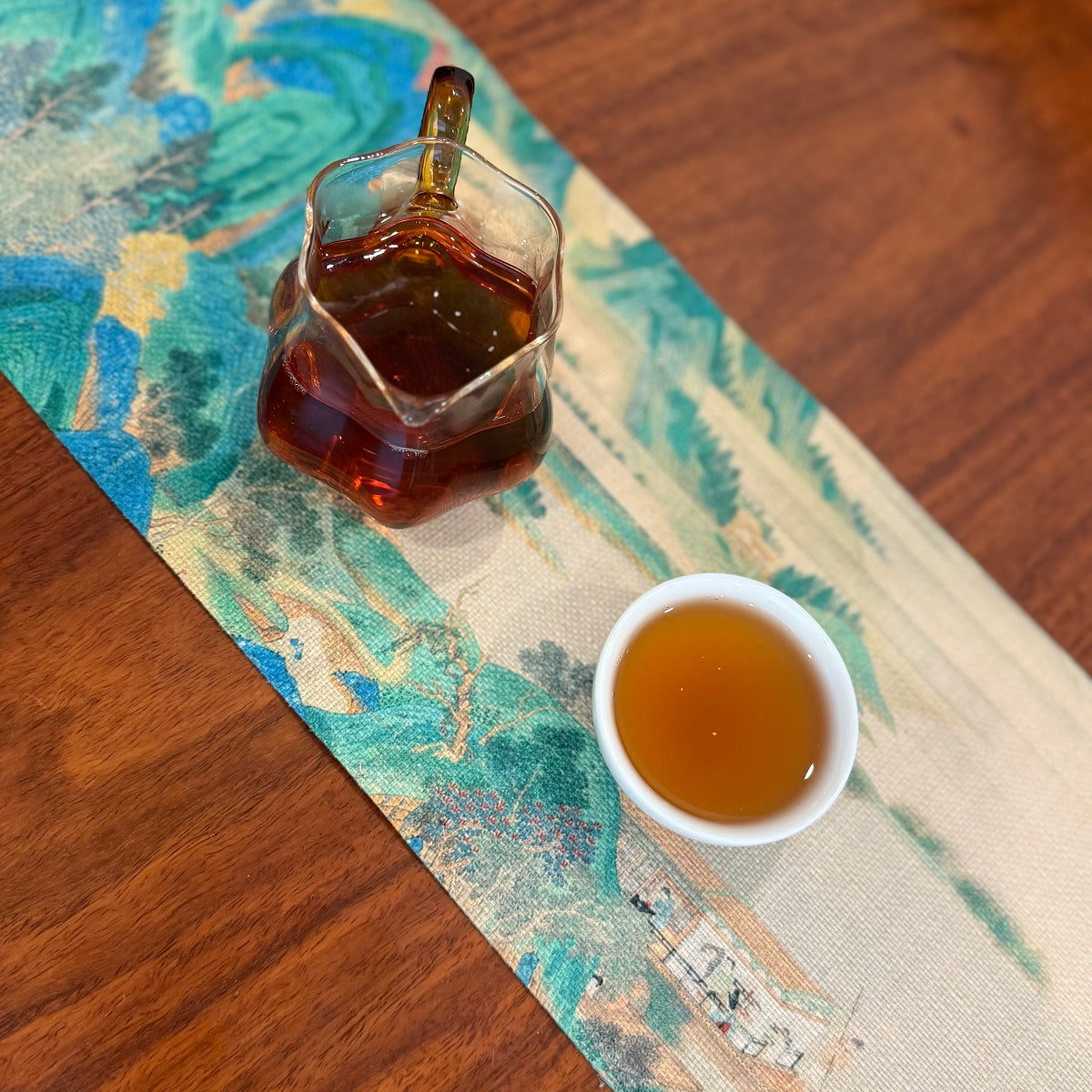Wie bereitet man Da Hong Pao-Tee (Big Red Robe-Tee) zu, damit er wirklich gut schmeckt? Wie bereitet man ihn richtig zu?
Diese Frage hat mich wie viele andere auch immer verwirrt. Angetrieben von meiner Liebe und Neugier für chinesischen Tee bin ich in die Teebranche eingestiegen und widme mich ihr seit sechzehn Jahren.
Ich erinnere mich noch gut an meine ersten Schritte, als ich meinen Meister – Herrn Chen – traf. Seine allererste Lektion war nicht, wie man Teesorten unterscheidet oder Teeutensilien benutzt, sondern ein Satz, der mir seitdem im Gedächtnis geblieben ist:
„Der Name des Tees muss zum Geschmack passen, nur dann ist er richtig aufgebrüht.“
Dieser Satz wurde zu meinem Leitsatz für die Zubereitung jeder Kanne Tee.
Heute möchte ich Ihnen mit diesem Artikel dabei helfen, diesen berühmten chinesischen Tee wiederzuentdecken, der von unzähligen alten Teeliebhabern als „letzter Punkt der Teeverkostung“ angesehen wird – Wuyi Rock Tea · Da Hong Pao Oolong Tea.
Den Geschmack anhand des Namens verstehen: Das Braugeheimnis von „Da Hong Pao“
Die Geographie und Bodenbeschaffenheit des Wuyi-Felsens · Da Hong Pao
- „Wuyi“ bezieht sich auf den Ursprungsort des Tees, das Wuyi-Gebirge in der Provinz Fujian – eine der ältesten Teeregionen Chinas, berühmt für ihre einzigartigen Gipfel und nebligen Landschaften.
- „Rock“ steht für das vulkanische Gesteinsgelände, das einzigartig für den Wuyi-Berg ist. Diese Felsen sind über Tausende von Jahren verwittert und haben schmale Spalten mit mineralreichem Boden für Teepflanzen geschaffen.
- „Da Hong Pao“ bezog sich ursprünglich auf eine seltene Teepflanzensorte, die noch immer in Felsspalten in der Nähe von Jiulongke in Wuyi wächst.
- „Oolong-Tee“ ist eine Kategorie halbfermentierter Tees, der nach traditionellen Methoden hergestellt wird und einzigartige Aromen und reichhaltige, vielschichtige Geschmacksrichtungen verleiht.
Aus dem Namen können wir ersehen, dass „Rock“ den natürlichen Geschmack definiert, während „Oolong“ sich auf das Aroma und die Struktur bezieht, die durch die Verarbeitung entstehen.
Warum ist „Rock Charm“ der Schlüssel zum Brauen von Da Hong Pao?
Die schmalen Spalten, die durch verwittertes Gestein entstehen, sind ideal für die tiefen Wurzeln der Teebäume. Teepflanzen wachsen langsam und absorbieren Kalium, Zink, Selen und andere Mineralien – was Da Hong Pao seinen charakteristischen „Felsengeschmack“ verleiht, auch Yan Cha (Felsentee) genannt.
Jeder traditionell zubereitete Oolong-Tee weist ein gewisses Röstaroma auf, das stark oder subtil sein kann und ein wesentlicher Bestandteil des Oolong-Geschmacksprofils ist.
Wenn wir das Terroir und das Handwerk hinter dem Namen Da Hong Pao verstehen, können wir das „richtige Gefühl“, das wir beim Brauen suchen, wirklich schätzen.
Schauen Sie sich bitte das Video unten an, um unsere Gongfu-Teezubereitungsvorführung zu verfolgen. Im Text und in den Bildern folgt eine detaillierte Schritt-für-Schritt-Anleitung.
Vorbereitung vor dem Aufbrühen: Empfehlungen zu Werkzeug, Wasser und Teemenge
Das obige Video zeigt bereits, wie man Da Hong Pao (Großes rotes Gewand) im Gongfu-Stil schnell zubereitet. Hier führe ich Sie detailliert durch jeden Schritt, damit Sie die Veränderungen der Blätter und Geschmacksschichten während des Brühens spüren können.

Vor dem Aufbrühen erwärme ich die jadeartige Schale (Gaiwan), die Probierbecher und die gläserne Fairness-Kanne mit kochendem Wasser. Dadurch erhöht sich die Temperatur der Utensilien, wodurch das Teearoma besser zur Geltung kommt und die Stabilität der Teesuppe während des Aufbrühens erhalten bleibt.
Dann gebe ich 8 Gramm getrocknete Da Hong Pao-Teeblätter in den Gaiwan. Nehmen Sie sich jetzt einen Moment Zeit zum Riechen – dank der erwärmten Schale beginnt der trockene Tee langsam, sein Aroma freizugeben.
Schritt-für-Schritt-Anleitung zum Brauen: So brauen Sie den wahren Charme von Da Hong Pao

Schritt 1: Tasse erwärmen und Tee ausspülen (Spülen/Aufwachen)
Wasser auf 100 °C (212 °F) erhitzen und dann schnell in den Gaiwan gießen, sodass jedes Teeblatt schnell durchtränkt ist. Die hohe Temperatur hilft, die in den Blättern eingeschlossenen Aromen und Geschmackskomponenten zu wecken und sie für das Aufbrühen vorzubereiten.
Decken Sie den Gaiwan ab, gießen Sie das Wasser schnell aus und lassen Sie es gründlich abtropfen – dieser Abguss ist nicht zum Trinken geeignet.
Dies wird als „Aufwecken“ oder „Spülen“ des Tees bezeichnet und ist ein unverzichtbarer Schritt bei der traditionellen chinesischen Teezubereitung.
Sie werden bemerken, dass sich die ursprünglich fest gedrehten, ölig-braunen, trockenen Blätter langsam entfalten und einen angenehmen Blumenduft verströmen.
Schritt 2: Schneller Rhythmus bei den ersten paar Aufgüssen, um das Aroma einzuschließen

Erster offizieller Aufguss: 8 Sekunden
Nach dem Spülen wird das Aroma des Tees aktiviert. Wartet man zu lange mit dem erneuten Aufbrühen, verflüchtigt sich der Duft mit der Luft und man verpasst den besten Moment für den Teegenuss.
Besonders bei Da Hong Pao, einem gerösteten Oolong-Tee, konzentriert sich das intensive Aroma in den ersten paar Aufgüssen, daher ist die Kontrolle des Rhythmus entscheidend.
Der Teeaufguss ist kristallklar und bernsteinfarben. Beim Eingießen in die jadeartige Probiertasse ist der blumige Duft deutlich wahrnehmbar, die Suppe ist weich und geschmeidig und der steinerne Charme ist deutlich spürbar.
Das anhaltende Aroma in der leeren Tasse ist elegant und anhaltend, einer meiner Lieblingsmomente.
Drei mittlere Aufgüsse: Geschmackskonzentrate und Teequalität eröffnen sich

Halten Sie die Spannung beim dritten Aufguss etwa 8 Sekunden pro Brühvorgang aufrecht.
Der Gaiwan enthält noch etwas Teeaufguss vom vorherigen Aufguss, was zur Kontinuität und Konzentration des Geschmacks beiträgt.
Sie werden feststellen, dass die Blätter vollständig entfaltet, prall, ölig und weich sind – das typische Aussehen von Wuyi-Steintee.
Vierter bis sechster Aufguss: Stabiler Körper und anhaltendes Aroma

Verlängern Sie die Ziehzeit während dieser mittleren Phase auf 11–15 Sekunden.
Diese Aufgüsse sind ein wichtiger Test für die innere Qualität und die handwerkliche Verarbeitung des Tees.
Ein gutes Da Hong Pao zeichnet sich hier durch eine vollmundige Suppe, ein stabiles Aroma und eine harmonische Struktur aus.
Je nach Röstgrad und Lagerungsalter können Sie die Ziehzeit leicht anpassen.
Nach dem siebten Aufguss: Das Aroma wird weicher, honigartige Noten treten hervor

Ab dem siebten bis zehnten Aufguss verlängern Sie die Ziehzeit schrittweise auf etwa 20 Sekunden.
Die Farbe des Likörs ändert sich von Bernstein zu einem sanften Goldgelb und der Geschmack verändert sich subtil:
- Das Aroma wechselt von intensiv zu sanft, Röstnoten gehen in süßen Honig und leichte Blumendüfte über;
- Die Suppe wird dünnflüssiger, bleibt aber weich und hat einen sauberen Abgang.
- Die Süße bleibt erhalten und das Tee-Qi (die Energie) bleibt erhalten – perfekt zum langsamen Genießen.
Ein oft übersehenes Detail: Soll der Gaiwan abgedeckt werden oder nicht?
Während der Pausen zwischen den Schlucken beeinflusst das Öffnen oder Schließen des Gaiwan-Deckels die Geschmacksentwicklung des nächsten Aufgusses.

- Durch Öffnen des Deckels entweicht das Aroma in die Luft und Sie können den Teeduft genießen, während Sie warten.
- Durch das Abdecken des Deckels bleiben die Blätter warm und tragen dazu bei, dass mehr Aroma und lösliche Bestandteile für den nächsten Aufguss freigesetzt werden.
Die Beherrschung dieses Rhythmus und dieser Details ist Teil der Kunst der Teezubereitung.
Aus diesem Grund kann derselbe Tee, der von verschiedenen Personen aufgebrüht wird, ganz unterschiedlich schmecken.
Fazit: Nur wenn man richtig gebraut wird, schmeckt man die Seele von Da Hong Pao
Ich habe meine persönlichen Erfahrungen zum professionellen Aufbrühen von Da Hong Pao-Tee ausführlich geteilt und über das Video hinaus weitere Einblicke gegeben, damit Sie den Charme von Da Hong Pao Wuyi Rock Oolong-Tee wirklich schätzen lernen können.
Folgen Sie uns gerne bei der Chinese Tea Group.
Wir sind eine Gruppe von Teeliebhabern mit einer Leidenschaft für die chinesische Teekultur. Mit unserer umfassenden Erfahrung in der Teeverkostung und -zubereitung haben wir es uns zur Aufgabe gemacht, Teeliebhabern auf der ganzen Welt authentische chinesische Tees näherzubringen.
Entdecken Sie unser gesamtes Sortiment an Wuyi Rock Oolong-Tees – zu jedem Tee gibt es ausführliche Verkostungsnotizen und eine Anleitung zum Aufbrühen.

